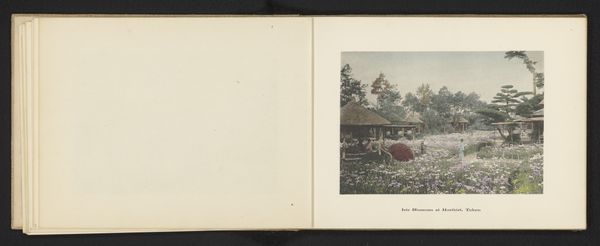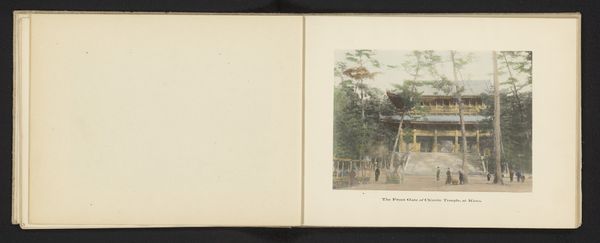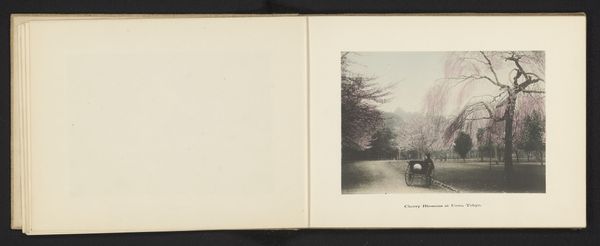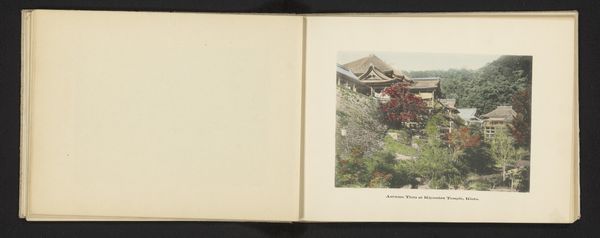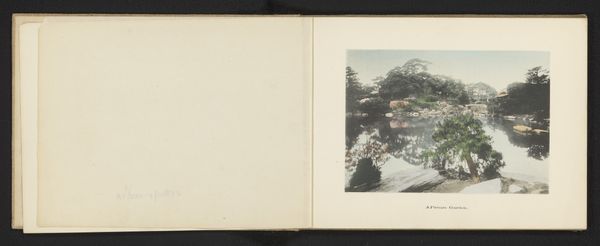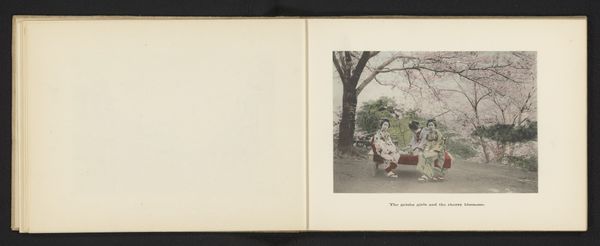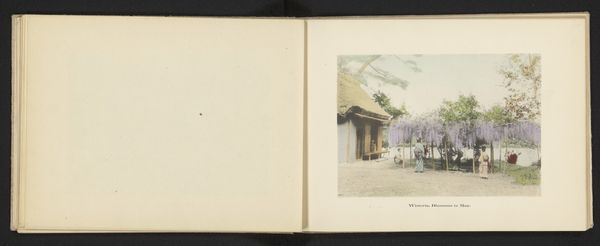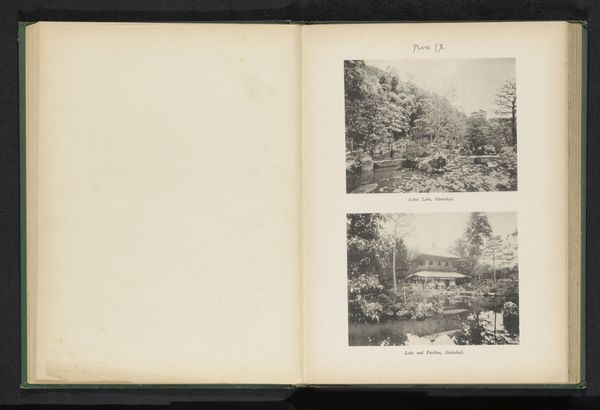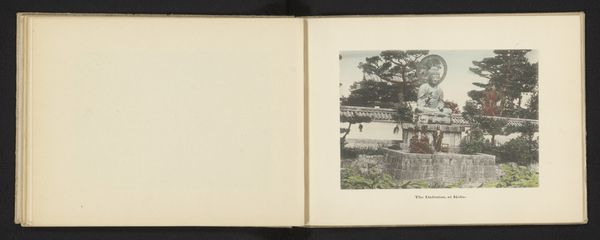
photography
#
photography
Dimensions: height 105 mm, width 149 mm
Copyright: Rijks Museum: Open Domain
Editor: Here we have "Gezicht op een kersenbloesem in het Maruyamapark in Kyoto," a photograph dating from around 1895 to 1905 by Kōzaburō Tamamura. It’s a gorgeous scene, full of people enjoying the cherry blossoms, a kind of serene snapshot of life. What stands out to you? Curator: I see more than just a serene snapshot. It's a photograph created during a period of intense Western influence on Japan – the Japonisme movement. How might the photographer, Tamamura, be consciously constructing a vision of Japan for a Western audience? Consider what aspects of Japanese culture are emphasized and perhaps idealized here. Editor: Well, definitely the beauty of nature and a sense of peace and tradition. Do you think there is anything being left out? Curator: Precisely. Notice how class divisions or the impacts of rapid industrialization are absent. It prompts a crucial question: who gets to participate in this idealized version of Japanese culture, and whose stories are marginalized? This idyllic scene needs to be viewed alongside the complexities of its time. What does it mean to represent culture in a certain way, especially when marketing to an outside perspective? Editor: That’s a great point. It seems to be highlighting an experience while perhaps not representing life as a whole for everyone. Curator: It certainly does. And what is created by the choices we make of what is deemed worthy of artistic interpretation? Editor: Thinking about the picture this way definitely changes the tone. Thank you. Curator: My pleasure! Examining art through the lens of cultural context empowers us to ask critical questions about representation and power dynamics.
Comments
No comments
Be the first to comment and join the conversation on the ultimate creative platform.
